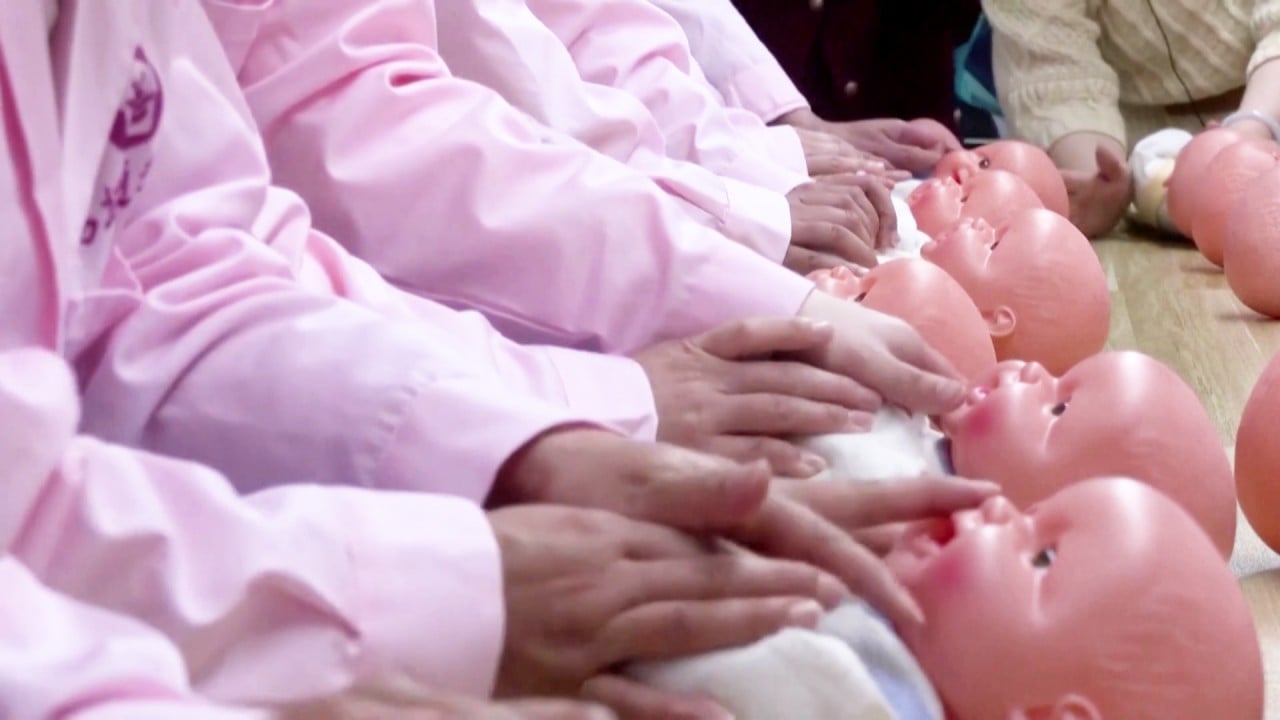Though South Korea has taken a controversial step to address its declining birth rate – hiring domestic helpers from the Philippines en masse to curtail the costs of child care – analysts in China, a country facing a similar demographic dilemma, are unconvinced such a move would lead to an appreciable change.
Daniel Yang, a father of two in Shanghai, said for his part he wouldn’t consider hiring a Filipino helper, mentioning several areas of concern.
“There will be big cultural differences, which means all aspects of life need to be adjusted,” said Yang, who employs a Chinese nanny for 9,500 yuan (US$1,333) a month.
The minimum wage is 2,690 yuan a month in Shanghai, the highest in the country.
“I’m also concerned about the safety of my kids [in the care of a foreigner] – should any incident happen, it will draw international attention,” he added.
“The domestic market is developing quite well and sufficient to meet demand. China has enough labour, and I don’t see a gap there for Filipino nannies to fill.”
The notion of introducing skilled foreign nannies to alleviate parental stresses and encourage births is one of many proposed solutions to a persistent problem. China’s population is shrinking, and with the decline comes questions over what effect the phenomenon will have on the country’s shaky economic growth.
In 2023, China’s population dropped for the second year in a row, falling by 2.08 million to 1.4097 billion. Only 9.02 million births were reported for the same year, the lowest annual figure since records began in 1949.
Despite a spate of government policies to boost births, young adults in China remain reluctant, citing the daunting cost of child-rearing, evolving social attitudes among younger generations that have also led to lower marriage rates, and the cutthroat living pressure faced by city dwellers in a difficult job market.
South Korea’s introduction of Filipino helpers to the workforce is part of a plan to address its own birth rates – the lowest in the world. There, an average 0.72 children is expected over a mother’s lifetime in 2023, down from 0.78 the previous year.
A replacement fertility rate of 2.1 children per woman has been estimated for a country’s population to remain constant.
China and South Korea are among the world’s most expensive places to raise children, according to a study by the YuWa Population Research Institute published last year.
However, demographers say that introducing foreign domestic helpers on a similar scale is unlikely to be feasible in China.
“Per-capita income in the Philippines is much lower than in South Korea, so bringing in [cheaper] Filipino domestic workers can help reduce childcare costs for young South Koreans,” said He Yafu, an independent demographer based in Guangdong province.
“Although China’s per-capita income is higher than that of the Philippines, it is still much lower than South Korea’s, and given the serious unemployment issues in China right now, I don’t think China will introduce Filipino domestic workers on a large scale.”
Working four to eight hours a day, domestic helpers could earn as much as 2.38 million Korean won a month (US$1,781), while the minimum monthly wage for foreign domestic workers in Hong Kong is 4,870 HKD (US$624).
But in mainland China’s largest cities like Beijing and Shanghai, domestic workers can cost 7,000 yuan (US$982) a month or more.
Expecting that Filipino helpers will be cheaper than those from China is unrealistic, said Yuan Xin, vice-president of the China Population Association and a professor of demography at Nankai University in Tianjin.
Bringing a foreigner into the family introduces an adaptation issue right from the start
“Filipino helpers won’t lead to significantly lower costs, and it certainly won’t become widespread. It’s more of a luxury for the wealthy few.”
The cultural and socioeconomic challenges inherent in such human exchanges, already sizeable, seem harder to surmount as geopolitical frictions between China and the Philippines escalate over territorial disputes in the South China Sea.
“Language, customs, beliefs and rights are all complex factors,” Yuan said. “Bringing a foreigner into the family introduces an adaptation issue right from the start.”
In 2022, Chinese demographer Liang Jianzhang called for a relaxation of rules to allow foreign nannies, which he said could boost China’s ailing birth rate by as many as 200,000 a year and save a cumulative 200 billion yuan for families. The report by Liang, also co-founder of online travel services provider Trip.com, estimated a reduction in expenses by 60 per cent for the average family.



